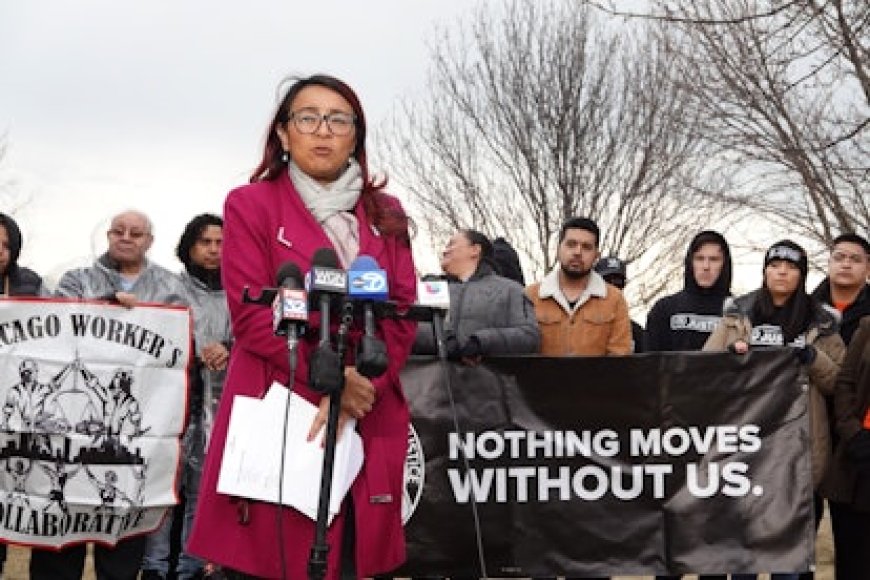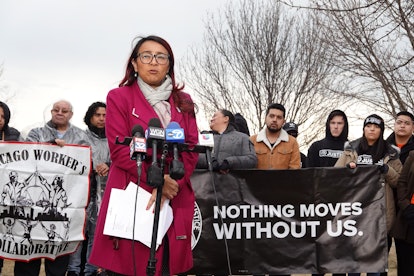Child Labor Laws Are Being Gutted Nationwide. It’s Not Helping Kids
Child Labor Laws Are Being Repealed Across The Country. Why ... Fatherly

Child Labor in the U.S.: A Threat to Sustainable Development Goals
When we think of child labor in the U.S., we tend to picture century-old archival photos of young children toiling in mines, factories, and tobacco fields. While it’s comforting to imagine that those days are behind us, child labor — dangerous work involving kids under the age of 17 — has never really gone away and is, in fact, making a big comeback in the U.S. The Department of Labor reported that the number of minors employed in violation of child labor laws is dramatically on the rise, with a 37% jump last year alone. And while child labor violations are increasing, so are state-by-state efforts to weaken child labor laws, some of which have been on the books since the New Deal.
The Threat to Sustainable Development Goals
In recent years, at least 14 states have introduced legislation designed to weaken child labor laws — and some of those states have succeeded. As of June 2023, four states had officially rolled back laws designed to keep kids safe in the workplace. These rollbacks of longstanding protections for kids have been framed as “pro-family” — that the laws give parents more power to allow their kids to work earlier outside of the home as a character-building experience, and as cold economic pragmatism. We’re in a labor shortage, that argument goes, and the “red tape” around youth employment is a barrier to growing the economy.
But experts in youth employment and child labor question both those notions and are deeply concerned by the legislative reversals. Young people have always been allowed to work — why weaken the workplace protections that allow them to do so as safely as possible?
And the rollbacks have come alongside a flood of reports about new child labor violations. This month alone, Chipotle locations in Washington, D.C., and Sonic restaurants in South Carolina, were fined for hundreds of child labor violations, involving everything from hiring underage workers to scheduling employees under the age of 18 to work illegally long and late hours. Earlier this year, a New York Times investigation found that minors — many of them migrant children — were routinely working late-night shifts in Grand Rapids, Michigan, packaging popular cereals and snack foods, prompting a Department of Labor investigation. In February, the DOL fined one of the country’s biggest food safety services providers $1.5 million for employing at least 102 children to work overnight shifts at 13 meat-processing facilities in eight states. According to the DOL investigation, children between the ages of 13 and 17 were “working with hazardous chemicals and cleaning meat processing equipment including back saws, brisket saws and head splitters.”
Illinois General Assembly Representative Dagmara Avelar with activists protesting alleged child-labor violations at the Hearthside Foods packaging facility.

Understanding Child Labor
Nina Mast, an analyst at the Economic Policy Institute, has been following the push to break down child labor protections.
“This is part of a much larger agenda of privatization and deregulation of our public institutions,” says Mast. “When you have youth potentially foregoing higher education, future earnings, and the ability to earn higher wages in our economy, their wages are depressed over their entire lifetime. That’s bad for the macro economy. It’s bad for adults… When youth are taking these jobs at low wages, it really pushes adults out of the labor market. Why would an employer hire an adult at $15 an hour, if they can pay a young person $10?”
Nina Mast went long with Fatherly on child labor, the laws that are sweeping the nation, why it’s a myth that paid work is good for kids, and why the child labor crisis isn’t new — it’s just been simmering under the surface.
Defining Child Labor
How is child labor defined?
When we say “child labor,” we’re talking about youth employment, particularly for youth 17 and younger. But when we [as experts] talk about child labor, we’re really focused on the more hazardous, exploitative jobs that may be harmful to youth well-being — roofing and demolition, meatpacking plants, or other factory-type labor. We’re also talking about the employment of youth in jobs where they’re illegally employed or are in an exploitative relationship with an
SDGs, Targets, and Indicators
1. Which SDGs are addressed or connected to the issues highlighted in the article?
- SDG 8: Decent Work and Economic Growth
- SDG 10: Reduced Inequalities
- SDG 16: Peace, Justice, and Strong Institutions
2. What specific targets under those SDGs can be identified based on the article’s content?
- SDG 8.7: Take immediate and effective measures to eradicate forced labor, end modern slavery and human trafficking, and secure the prohibition and elimination of the worst forms of child labor.
- SDG 10.7: Facilitate orderly, safe, regular, and responsible migration and mobility of people, including through the implementation of planned and well-managed migration policies.
- SDG 16.2: End abuse, exploitation, trafficking, and all forms of violence against and torture of children.
3. Are there any indicators mentioned or implied in the article that can be used to measure progress towards the identified targets?
- Indicator for SDG 8.7: Number of children engaged in child labor.
- Indicator for SDG 10.7: Number of child labor violations in different industries.
- Indicator for SDG 16.2: Number of child labor violations involving abuse, exploitation, and hazardous work conditions.
Table: SDGs, Targets, and Indicators
| SDGs | Targets | Indicators |
|---|---|---|
| SDG 8: Decent Work and Economic Growth | Target 8.7: Take immediate and effective measures to eradicate forced labor, end modern slavery and human trafficking, and secure the prohibition and elimination of the worst forms of child labor. | Indicator: Number of children engaged in child labor. |
| SDG 10: Reduced Inequalities | Target 10.7: Facilitate orderly, safe, regular, and responsible migration and mobility of people, including through the implementation of planned and well-managed migration policies. | Indicator: Number of child labor violations in different industries. |
| SDG 16: Peace, Justice, and Strong Institutions | Target 16.2: End abuse, exploitation, trafficking, and all forms of violence against and torture of children. | Indicator: Number of child labor violations involving abuse, exploitation, and hazardous work conditions. |
4. Detailed Explanations:
The issues highlighted in the article are connected to multiple Sustainable Development Goals (SDGs). The first relevant SDG is SDG 8: Decent Work and Economic Growth. This goal addresses the issue of child labor by aiming to eradicate forced labor, modern slavery, human trafficking, and the worst forms of child labor. The article discusses the increase in child labor violations and the weakening of child labor laws, which directly relate to SDG 8. The specific target under SDG 8 that can be identified is Target 8.7: Take immediate and effective measures to eradicate forced labor, end modern slavery and human trafficking, and secure the prohibition and elimination of the worst forms of child labor. The indicator for this target is the number of children engaged in child labor, which can be used to measure progress towards eradicating child labor.
The second relevant SDG is SDG 10: Reduced Inequalities. This goal focuses on reducing inequalities within and among countries. The article highlights the impact of child labor violations on vulnerable groups, such as migrant children and minority communities. Target 10.7 of SDG 10 aims to facilitate safe and responsible migration and mobility of people. The indicator for this target is the number of child labor violations in different industries, which can provide insights into the extent of inequalities and exploitation faced by children in the workforce.
The third relevant SDG is SDG 16: Peace, Justice, and Strong Institutions. This goal addresses issues related to justice, human rights, and the rule of law. The article mentions child labor violations involving abuse, exploitation, and hazardous work conditions. Target 16.2 of SDG 16 aims to end abuse, exploitation, trafficking, and all forms of violence against children. The indicator for this target is the number of child labor violations involving abuse, exploitation, and hazardous work conditions. Monitoring this indicator can help measure progress towards protecting children from harmful work environments.
Behold! This splendid article springs forth from the wellspring of knowledge, shaped by a wondrous proprietary AI technology that delved into a vast ocean of data, illuminating the path towards the Sustainable Development Goals. Remember that all rights are reserved by SDG Investors LLC, empowering us to champion progress together.
Source: fatherly.com

Join us, as fellow seekers of change, on a transformative journey at https://sdgtalks.ai/welcome, where you can become a member and actively contribute to shaping a brighter future.







